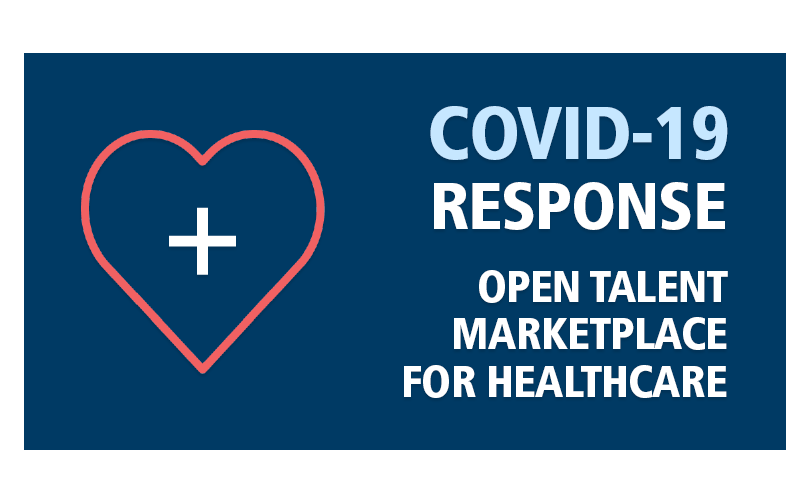
Understanding CDC Guidelines for Outpatient Facilities
Designed to keep Americans safe from the novel coronavirus, Centers for Disease Control and Prevention (CDC) guidelines for outpatient facilities, including rehabilitation centers, aims to reduce the risk of community spread while people continue to receive essential services.
Understanding CDC COVID-19 Guidelines
“As this virus changes, the science changes and through it all, the scientists across CDC have worked every day to stay current in our recommendations, incorporating the latest science into our guidance and partnering with state and local public health to provide recommendations that are both feasible and can be implemented in communities across the country,” said Rochelle Walensky, MD, MPH, director of the CDC, during a media briefing on January 7, 2022.
Healthcare staffing shortages are leading to difficulty providing needed services. At the end of December 2021, the CDC issued interim guidance for managing healthcare personnel with COVID-19 or exposure to the novel coronavirus. The guidance states that asymptomatic healthcare personnel “who have had a higher-risk exposure do not require work restriction if they have received all COVID-19 vaccine doses, including booster dose, as recommended by CDC and do not develop symptoms or test positive for SARS-CoV-2.”
Healthcare workers with symptoms should be tested, per the CDC. Those with symptoms should stay home until the fever is gone, symptoms improve and two antigen tests collected 24 hours or more apart are negative. People with COVID-19 can come out of isolation on day five.
“If you are symptom free on day five, then you can think about leaving isolation on day six, as long as you’re reliably wearing a well-fitted mask,” Walensky said.
California has taken a somewhat different approach and will let healthcare personnel who have been exposed or tested positive for COVID-19 and are asymptomatic return to work without isolating or testing, due to the critical staffing shortages the state is experiencing. They must wear N95 masks and preferably care for only COVID-19-positive patients.
Hospitals in Rhode Island and Arizona also are allowing asymptomatic or mildly symptomatic employees to continue working, according to the Associated Press.
Entering the third year of the pandemic, elective surgeries again are being postponed as hospitals struggle to handle the masses of COVID-19 patients entering their doors. That often means less need for outpatient rehabilitation therapy.
Shifting to telerehabilitation
The CDC guidelines for outpatient facilities include adjusting the delivery of healthcare services to reduce the need to provide in-person care. The agency advises optimizing the use of telehealth, including for physical therapy, occupational therapy and other modalities in a hybrid approach.
“As some people with COVID-19 are asymptomatic, telehealth and virtual visits help reduce risk of exposure and spread of COVID-19 to residents,” said Sharmila Sandhu, JD, vice president of regulatory affairs for the American Occupational Therapy Association (AOTA).
Many practices, including the Centre for Neuro Skills (CNS) in Bakersfield, California, have adopted telerehabilitation.
“I’m happy to say that now we have the benefit of a lot of experience with telehealth platforms for rehab, and this allows us to continue to use telehealth in an ongoing way,” said Matthew J. Ashley, MD, JD, CMO of CNS.
Telerehabilitation may be delivered in real time, allowing the patient to engage with the therapist, using an audio-video technology. It also could be delivered using recorded video or images for a home program, similar to using a physician portal to ask questions.
The Centers for Medicare & Medicaid Services (CMS) and many insurers are now covering telerehabilitation visits.
“Many therapy practitioners have taken advantage of the telehealth flexibilities offered by both CMS and private insurers,” Sandhu said.
Prior to the pandemic, telehealth by physical therapists (PTs) was nearly nonexistent, according to the American Physical Therapy Association. But at the time of the association’s 2020 survey, half of PTs were using telehealth, and among school system PTs, 93 percent were using telehealth.
Ashley reported that telehealth “is allowing us to extend our reach to patients and families to do in-home training, evaluation and longer-term assessments.” And the practice is fully operational and continues to admit and treat new patients.
Various technology tools are available to help with in-home, telehealth rehabilitation, including Neofect’s Smart Glove, which uses artificial intelligence to assist a patient recovering from a neurological condition to play games, get the person repeatedly using the affected hand again, and provide therapists with documentation of the person’s progress. The company also makes Smart Balance for physical therapists to help patients with balance and gait. The clinician, through a portal, decides what programs the patient will use, monitors how the person is moving and can make the games more difficult as the patient improves.
“When they are doing this with their own occupational or physical therapist, it works better,” said Scott Kim, CEO of Neofect in San Francisco.
Sandhu mentioned that occupational therapists (OTs) working in skilled nursing facilities also are using telehealth to “help decrease the number of staff in contact with patients. The resident is assisted by another staff member who would likely already be in contact with the resident.”
CMS has not approved speech-language pathologists' (SLPs) use of telehealth, except for communication, and not every patient is appropriate, said Renee Kinder, MS, CCC-SLP, RAC-CT, a member of the American Speech-Language-Hearing Association’s Health Care and Economics Committee.

Adopting in-person outpatient safety tips
When in-person care is required, CDC guidelines for healthcare facilities advise getting healthcare personnel vaccinated against COVID-19, screening patients and visitors for fever and other COVID-19 symptoms, using personal protection equipment, separating patients with and without COVID-19 systems, and encouraging sick employees to stay home.
Kinder cautioned that CDC guidelines change frequently. The agency updates as public health professionals learn more about the coronavirus and as staffing crises occur.
The CDC recommends patients be assessed for symptoms of COVID-19, but even those who are asymptomatic may be infected and able to transmit the disease to others.
Some offices take a patient’s temperature before entering the practice or clinic.
Healthcare workers should wear medical-grade personal protective equipment, such as a properly fit N95 respirator, and patients should wear a face covering.
The waiting room should be set up to keep patients at least 6 feet apart, or patients should wait in their cars or in an outdoor waiting area until the therapist is ready to see them.
Surfaces should be cleaned between patients using Environmental Protection Agency-approved products effective against SARS-CoV-2, the virus that causes COVID-19.
Kinder said that most of the procedures SLPs do with clients involve producing aerosols, increasing the chance of virus transmission.
And APTA reminded its members that mobilization, exercise and ambulation should be considered potential aerosol-generating procedures in patients with COVID-19 and to take the appropriate precautions, such as wearing full protective gear.
AMN Healthcare has partnered with outpatient facilities across the country to guide and support them through these unprecedented times. Click here to request staffing support or more information.



